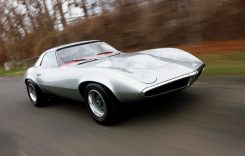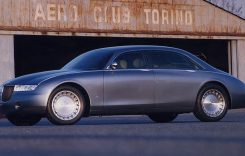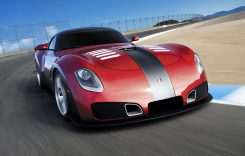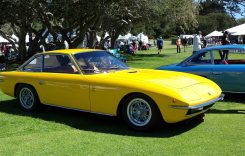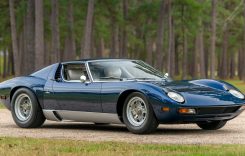If history had been different, the Lagonda Vignale could have been the car that was developed by Aston Martin but instead, the company chose to invest in the DB7 model as their car of choice and it has been developed into the performance car that we know and recognise today.

In the 1990s, the ‘Aston’ brand concept had not yet been developed and the company operated under the Ford name. Ghia, the Italian Carrozzeria was purchased by the company in 1970. At that time, Moray Callum was working for Ghia and was given the responsibility of redesigning the Lagonda model.
In an interesting twist of fate, his brother Ian Callum was also recruited at the same time to work on the DB7. The DB7 used a platform similar to the Jaguar XJS and the Vignale was based upon the 1990 Ford Lincoln Town model.
The Vignale’s chassis was longer and the body panelling took inspiration from a ballooning art deco theme. Designers kept the suspension and four-speed gear box from the Lincoln as well as the 4.6 litre DOHC V8 engine which chugged along at 190 bhp. But this engine was only a stop gap. Had it gone to production, the design team would have used a 5.9 litre V12 to power the meaty saloon.
In time however, this engine was used by the Vanquish, albeit renewed and refreshed. The Lagonda Vignale was launched together with the DB7 at the Geneva Motor Show in 1993. Its new and attractive shape was deceptive, hiding its large proportions.

Its wheelbase was longer than the Silver Spirit which came out at around at the same time. Moray Callum was excited at the design prospect he had been given in relation to the Lagonda. There were very little rules or limitations given to him and the brand had not developed an image that people have gotten accustomed to so he was free to completely overhaul the design.
He wanted to bring flamboyance and innovation to the Lagonda. With its curvaceous shape and its shorter overhangs, the design looks modern even today. The extended wheelbase also resulted in an expanse of room inside the vehicle.
Continuing the art deco theme internally, it featured Analine dyed parchment leather spread throughout the interior intertwined with aluminium and beech wood. The woollen carpets and headlining gave the vehicle an illustrious feel.
Ghia commissioned two Vignales and with extensive interior space, the car accommodated five seats. Sometime later, the Works Service department commissioned the DP2138. There were some changes – the seats were reduced to four with twin armchairs creating a bond-like feel and the awkward bench seat in the rear was removed.
The Sultan of Brunei took the only production unit of the Lagonda Vignale for the sum of £1.3 million in 1995. He made a number of bespoke alterations. The vehicle was smaller using the Ford platform. The headlights and grille were redesigned. The order was produced in a striking burgundy colour and the V8 engine was upgraded to a powerful V12.
At this time, a rare Sorrento Blue model retained by Ford until 2002 was sold at Christie’s auction house for an eye watering $403,500 despite a cautious guide price of $60-120,000. The grey model was not so fortunate. Used as a marketing strategy it was destroyed due to it being inferior when it comes to engineering.
Despite the Lagonda’s iconic design and the good reception from customers, it was not able to compete with the DB7. Aston considered the Lagonda to be too expensive to redevelop and its lack of notoriety outside the UK market secured its fate.
The Lagonda Vignale was laid to rest and Aston focused its efforts on extensive production of the successful DB7. This twist of fate led Ian Morray to the offices of Jaguar in the last five years and Moray Callum to the doors of Ford America design team.
